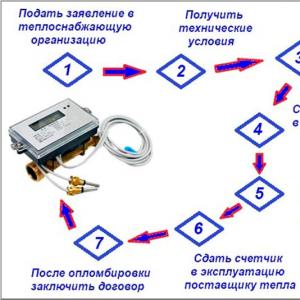Dovetail, spike groove and other do-it-yourself tools for a milling machine. Chapter V. Restoration of structural elements of furniture Preparation for work
Dovetail joinery was created centuries ago before the advent of reliable adhesives and affordable fasteners. This traditional way of connecting two wooden parts is still in demand today. It is used in box structures and in the manufacture of furniture. We will talk in detail about all the features of this carpentry connection, the intricacies of its design and how to create manually and mechanized methods.
Dovetail is not only aesthetics
It is widely believed that today, in an era of affordable quality glue and cheap fasteners, the use of a dovetail is more of an aesthetic whim. This judgment is only partly true. Undoubtedly, all possible variants of this tenon connection are very expressive, testify to the skill of the carpenter and are able to decorate any project. But the dovetail, in addition to beauty, also has important functional advantages.
The compound resists the natural deformations of wood well, without losing structural integrity. Due to this quality, it is advisable to use it in large parts, especially in solid wood products in the manufacture of furniture and drawers.
Using a dovetail, you can choose the optimal strength of the connection: this is affected by the total number of spikes and the angle of the lug. Another feature that increases mechanical strength is a large bonding area.
Anatomy of a dovetail
The connection consists of two parts. At the end of one of them, wide trapezoidal "dovetails" are carved, on the other - narrow reciprocal spikes. The spike on the edge is called half or one-sided due to the presence of one bevel instead of two.
What should be considered when designing a connection?
When designing a dovetail, a number of points are taken into account that will affect both its strength and appearance.
The distance between the spikes and their size determine the strength of the connection.

At equal intervals (ratio 1:1), the mechanical strength is the highest. But this configuration is rarely used. Since, due to the large number of elements, the manufacture of the part takes a corresponding time. The chance of making mistakes that cause a loose fit is also higher. Typically a 2:1 or 3:1 ratio is used. In these cases, the strength of the connection remains the same high.
When joining wide parts along the edges, additional spikes are made with small gaps. This solution helps to effectively deal with warping of wood.
This is an important parameter that determines the mechanical characteristics of the joint. If the angle is too small, the lock will not lock and the mount will turn into a regular spike connection. If the angle is too large, during assembly, the narrowed part of the dovetail may split and the spike will fall off.
For soft wood, the dovetail angle is made steeper, as it is more prone to crushing and deformation under the influence of loads. The optimal ratio is 1:6. For hardwood, the angle is made less steep - 1:8.
The design principle of the dovetail shape is shown in the drawing.

How to make accurate markup?
When making a dovetail with your own hands, marking accuracy is of paramount importance. For its application, traditionally, a bevel and a square are used.

A more practical and convenient device for these purposes is a special template. Such markers come with different angle indicators, and are designed for soft or hard woods.

Making a dovetail with your own hands
To make a dovetail manually, you will need the following set of tools:
TOOLS
- marking thicknesser;
- Malka or a special marker;
- joiner's square;
- edge saw;
- carpenter's chisel and mallet;
- marking knife or pencil.
Cutting out the connection begins with the preparation of the part with spikes. This is important as it will be used for dovetail markings. In order not to get confused in orientation, temporary markings are made on the parts, marking the front and back sides, top and bottom edges.
We mark the line of shoulders on all four faces with a thickness gauge. Having decided on the number of spikes, using a special template, we apply markings, first on the end, and then on the face of the part. For the convenience of subsequent work, we mark the areas that will be removed.

The same procedure can be performed using a bevel and a carpenter's square.

With a back saw, we make even cuts to the shoulder line marked with a thickness gauge. We hold the canvas strictly perpendicular to the end; we saw with uniform movements without jerks. To prevent the saw from being pulled to the side, a small carpenter's square can be used as an impromptu guide.

Waste between spikes can be removed in two ways:
The first is with a jigsaw. In this case, the main part of the waste is removed, and small residues are carefully cut and cleaned with a chisel.

Choosing waste is not much more difficult using a single chisel. Having fixed the part on the workbench, we remove the wood in layers, as shown in the diagram.


- Dovetail markings
We use the spiked part as a template for marking the dovetails. Aligning the end of the first part with the line of the shoulders, we mark the dovetails as shown in the photo. For convenience, we shade the waste sections.

- Sawing "dovetails"
We make cuts with a back saw. We clamp the workpiece in a vice at an angle, so that the marking lines are not at an angle, but vertical. This will increase the convenience of work and allow you to make a cut more accurately.

We cut not strictly along the marking line, but next to it, so as to create a small margin for subsequent trimming of the connection. We saw smoothly, without jerks, we stop at the line of the shoulder.
Having made all the cuts, we remove the waste between the “dovetails” with a chisel. This process is similar to stripping spikes, except that the master is faced with the task of carefully and evenly trimming the left allowance.
We cut out the shoulders. We saw off the waste with a small allowance, then cut it with a chisel to the marking line.

- Dry assembly and connection fitting
Before gluing, dry assembly is carried out to check the tightness of the fit. We insert the part with spikes into the dovetails and carefully knock it out with a mallet. To avoid breakage of spikes and tails, cover the connection with a piece of wood that will spread the blows.
Spikes and tails should fit snugly together. In the correct connection, light tapping with a mallet is enough to assemble. If the connection is too tight, the parts are disassembled, the problematic thickening is determined and very carefully cut with a chisel.

The glue is applied in a thin layer on all contact surfaces of both parts of the box joint. The assembled structure is pulled together. To distribute pressure over the entire joint area, wooden blocks are placed under the jaws of the clamps.

Details of box connections are always made in several copies. You can streamline your workflow by stacking blanks and sawing the entire series in one go.

How to make a dovetail with a router
For mass production of parts with such a lock, it is advisable to use mechanized methods. The best option in this case is the use of special templates, in which one side is intended for milling "dovetails", the second - for creating spikes.
Dovetail templates require the use of two different bits. The first is a conical cutter for cutting trapezoidal dovetails. The second is a straight wood cutter to create spikes.

The part with the "tails" is positioned in such a way that its edge is located strictly in the center of the slot. We install the second part (with spikes) flush on the reverse side. For an accurate fit of two blanks, we use a carpenter's square.

We fix the assembled structure in a horizontal position, clamping it with clamps or in a vice.
- Dovetail milling
For convenience, we mark the waste part with a pencil. We set the desired overhang of the cone cutter and cut out the gaps between the dovetails.


On the corresponding side of the template with a straight cutter, we cut out the spikes along the entire length of the part.

Cutting off excess spikes. We release the clamps and move the template so that each spike is in the center of the slot.

We mark the extra elements and cut them off with a milling cutter.

How to make a spiked box connection with a hand tool.
Multi-thorn box connections are classic carpentry technologies. They are still used in the production of high-quality furniture. Of course, in our time, simpler and faster methods of assembling boxes are more often used. I myself usually assemble boxes on self-tapping screws, but I will write about this in another article. Here I propose to remember how this was done from time immemorial with a hand tool.
Actually, the questions of making spikes by hand sometimes arise if you don’t have special tools and fixtures at hand. And buying an expensive machine for one-time work does not make sense. True, you must understand in advance that manual work requires care and accuracy.

From the tools you will need a hacksaw-award, a set of chisels, a mallet. For marking a pencil and a metal ruler. The award differs from a regular hacksaw not only with a small tooth, but also with a special “back” overlay on the upper edge of the saw. This overlay provides additional rigidity of a cloth.
Spikes can be made self-gripping, i.e. dovetail or straight. It is better to start with straight lines, dovetail can be used when some experience appears. The details of the box in the photo are from MDF, but this is not the point, the wood blanks are processed in the same way.

1. Let's start with marking the ends of the parts. Drawer slats 100 mm wide. divided into five equal parts. Let's break them into squares 20/20 mm. , then we will combine the ends of the parts and shade the squares with a pencil through one.

That is, a clean square should be located opposite the shaded one. When making spikes, we need to remove the painted areas.
2. For ease of use, the part must be clamped vertically. If you do not have a carpentry workbench, then fix the part with two clamps to the desktop. To do this, clamp a wooden block on the edge of the table with one clamp, and pull the part to the bar with the other.

3. We cut the spikes along the markup, and note that you need to cut not along the line, but so that the marking lines remain on the side of the saw. If the cuts are made exactly along the line, the spikes will be loose and assembly of the box will become a problem. You will have to glue veneer or chips into the gaps, in general, hemorrhoids and poor-quality work. We are sawing out the areas shaded with a pencil, so the saw must be inside the shaded sector. We make cuts to a marking depth, in this case 20 mm.


4. With a chisel or cutter, select the segments between the cuts.

We take the part out of the clamp and lay it flat on the table. With a chisel we align the shoulders between the spikes. In order not to spoil the table, it is better to put a planed board or a piece of plywood under the workpiece. A wooden mallet may be needed, see .

5. When all the spikes are propylene and decorated, we carry out the initial assembly. If during assembly the spikes do not fit into place, it's okay, you need to fit the parts using a chisel or cutter (knife). For a quality assembly, fractions of a millimeter matter, therefore, for an accurate fit, it is better to work the spikes with a file or a large sandpaper on a long bar.
I once had to make not only boxes on spikes, but also knit wooden window frames using hand tools. There, the principles of work are the same, the spikes and lugs were first cut out according to the markings with a saw - an award, and then cut down the excess in the lugs with a chisel.
If you need to make a lot of spiked boxes, then it's better to think about purchasing a power tool. Such spikes can be made with a manual router installed in the “table”, or on a small stationary circular saw with a variable saw height. For both options, you will need to make a device for precise cuts. But it seems to me that making such a device is no more difficult than manually preparing parts for several boxes.
The reliability and aesthetics of complex wood structures largely depend on the correct choice of the method of connecting its components. This is especially true for frame products, load-bearing structures, where safety parameters come to the fore.
High-quality connection of wooden parts is a guarantee of durability, the basis of an attractive appearance of the product, an indicator of the skill and professionalism of a carpenter and joiner.
Connection type selection
In general, there are a huge number of types of joints of wooden blanks, so you can only talk about some of them, the most common.
One of the easiest ways to build up a wooden part (beam, log, board), increase its width is the end connection. There are several options for its implementation. Often a simple and functional half-thickness (half-tree) method is used. Depending on the expected load on the part, the cut can be even or oblique. In some cases, the joint is strengthened with curly cutouts - locks. This type of connection prevents stretching, twisting, bending. So the timber is spliced together for the purpose of lengthening.
Creating three-dimensional frames or wooden frames requires reliable connections at various angles. In this case, it is rational to use a thorn-groove or thorn-eye connection. The nodes at the junction of the parts withstand the load of displacement, bending and compression. If the design requires high tensile strength, cutouts are made in a trapezoidal shape.
Additional connections of frame products, giving rigidity to the structure, are implemented using T-shaped or cruciform connections. The main load at the joints is compression, displacement and rupture. In special cases, the structure is additionally reinforced with metal corners, screws or nails.
To connect the boards to each other in box structures at a right angle, it is convenient to use a special box groove. As the name implies, this method is often used to create three-dimensional structures, including furniture boxes. A well-made box joint looks monolithic, has an attractive appearance and can withstand impressive loads. When creating wooden furniture, a connection is often used on dowels, pins and dominoes (when the groove has an oblong shape, as opposed to a round dowel).
Spike connection (thorn groove)
The simplest and one of the most reliable is the thorn-groove connection. It is widely used in carpentry. In a similar way, wooden parts of window frames are assembled into a single whole, a variety of parts of cabinet furniture, plywood sheets are made. The essence of this method is that a spike is made at the end of one part to be joined, which is inserted into the groove of another part and fixed in it.
For work, it is convenient to use a special lamellar milling cutter; for lack of such, you can get by with a simple hand tool. You will need:
- hand saw with a fine tooth;
- electric or hand drill;
- several chisels of different widths;
- sandpaper;
- measuring tool, square and pencil.
First mark the blanks. The parameters of the tongue and groove depend on the parameters of the wooden parts and the configuration of the product, however, it is worth considering a few general recommendations.
Important! The thickness of the spike should be about a third of the thickness of the part, the width should be 70-80% of the width, the length should be equal to the thickness of the workpiece to be joined.
The groove parameters must also meet these criteria. In any case, it is important to ensure that the dimensions of the tongue and groove match. Parts should be connected easily, without pressure, but not fall out under their own weight. There should be no backlash, cracks and distortion.
The groove is cut first, this sequence is due to the fact that the spike is much easier to fit under the groove than vice versa. With the help of a saw, cuts are made, excess wood is removed with a drill, the bottom of the groove and the walls are leveled with chisels.
In most cases, only wood glue is enough to fix the parts; screws or nails will help to ensure maximum strength.
Half tree connection
Quite often, in carpentry, various options for half-wood joints (simple or direct lock) are used. This type of assembly of wooden structures is characterized by ease of manufacture and high reliability. The following varieties are distinguished:
- cross connection;
- half a tree - dovetail;
- gusset;
- on the mustache;
- half-tree splicing.
The first two methods are used to connect parts that intersect at right angles. Especially popular is the dovetail, in which the cutout shape is a trapezoid and the sides do not go at a right angle. The groove of the lock slightly expands from the end, providing a more secure fit. It should be noted that a spiked joint can also be called a dovetail if the spikes are cut in the form of trapezoids.
The second and third ways form a finished corner. Splicing is used if necessary to increase the length of the workpiece.
How to make a cross connection
One of the simplest is the cross connection. It is easy to manufacture, even a novice carpenter can master its wisdom. The work is done in the following order:
- marking is done. The parts to be joined overlap each other. Draw a line with a ruler. Thickness markings are applied with a thickness gauge;
- the first part is clamped in a vise. With a hand saw, carefully, along the lines, a cut is made to the mark left by the thickness gauge. The workpiece is rotated. A second cut is made;
- the workpiece is removed from the vise. With the help of a sharp chisel and a wooden mallet, part of the wood is removed between the cuts;
- processing the second part;
- the planes are leveled with sandpaper or an abrasive bar.
Now you can join the wooden blanks. The connection must be tight, without backlash and gaps. If the product is one-piece, the joints are coated with carpentry glue, the design is additionally reinforced with screws.
Formation of corners on the mustache
One of the best ways to create corners of various volumetric products is a mustache joint. It allows you to create a monolithic structure, hide the fibers of the end, thereby providing an attractive look. This method is suitable for a wide variety of products, but is most often used for the manufacture of frames and cabinet furniture parts.
To create a connection in each of the wooden parts, cuts are made at an angle equal to half the angle at which the workpieces meet. Most often, this angle is straight, therefore, the cuts are made at 45 degrees, however, the angle can vary widely. Work is performed according to the following algorithm.
First mark out the details. It is important not to forget that the markup is carried out along the long side, otherwise you can not guess with the dimensions.
On the edges to be connected, draw a line at the required angle. With a combined square, the markup is transferred to each side of the workpiece. Then a cut is made, for which it is better to use an electric miter saw, but you can also work with a hand tool. When working with a hacksaw, it is important to control the angle of the cut; it would be useful to use a bar as a guide.
Finished parts are applied to each other, checking the accuracy of fit. Irregularities will have to be smoothed out with a hand planer, bring the angle with a sandpaper. Carpentry glue is applied to both surfaces, and the product is fixed with the help of clamps. Additional strength can be achieved with the help of carnations. When working with a hammer, it is important to control the force of impact so that the workpieces do not move.
Particularly important connections are reinforced with bars, which are glued into the inner corner. The joint, which will not be visible, can be further strengthened with a metal square.
As a result of high-quality work, a perfect seam will turn out. If a small gap has formed, then it can be hidden by straightening the adjacent wood fibers using a smooth cylindrical surface. For this, the rod of a conventional screwdriver is suitable.
Spike in the eye
Corner and tee (example: T-shaped connection of a window frame) intersections are conveniently performed using the tongue-and-groove method. In this case, the eye is made at the end of the vertical part, cuts for the tenon - in its horizontal component.
Work begins with the marking of the eye. The workpiece thickness is divided by three. With a thin hacksaw, cuts are made to a depth equal to the width of the other workpiece. With the help of chisels, excess wood is removed, the walls of the eye are leveled with sandpaper.
Mark the second blank. The width of the stud should be equal to the width of the first workpiece, the thickness should be equal to the thickness of the stud. The cuts are made with a hand saw, the depth and angle of inclination are carefully controlled. Excess is removed with a chisel.
The final finishing in thickness is performed with sandpaper. Parts should be connected with light force and not fall apart under their own weight.
Thorn in the jack
A more complex connection is the spike-to-socket method. It requires more skill, but is much more reliable and durable. The scope of use is the same as in the previous case, namely, T-shaped joints. The difference of this method lies in the fact that the spike is made at the end of the vertical part, a nest is sawn out in the body of the horizontal.
This is one of the most common furniture joints. There is a connection with a through spike and with a deaf one. The difference is that in the first case, a through nest is cut out, in the second, a slot is made to a certain depth.
Features of the Japanese carpentry connection
Unprecedented heights of carpentry art were reached by Japanese masters. Using traditional techniques, combining various types of connections, they create precise and reliable joints without the use of nails or other fasteners. Docking of various wooden parts is carried out solely due to the force of friction.
The reliability of these connections is based on an accurate cut. Perfectly matched lock lines on both mating parts allow you to create a connection with impeccable precision. Complex lock configurations require a lot of experience, knowledge and ability to use the tool, but if you wish, all this can be learned.
Rallying boards
High-quality wood is expensive, it is not always possible to buy a good board with the necessary parameters, and it is not always necessary. To make, for example, a table top, it is not at all necessary to look for a table-wide board, having carpentry skills, you can create an ideal wooden canvas with the necessary parameters.
There are many payment options. A board with a spike and a groove, the so-called lining, is widespread. It allows you to create smooth wooden surfaces of a large area. A simplified version of it is often used - a board with a quarter joint.
Rallying for a smooth fugue (butt)
The easiest way that does not require additional elements. The side faces of the boards are jointed, it is better to do this in pairs, clamping both adjacent boards in a vise and simultaneously processing them. Such processing will create an accurate surface on which the irregularities of one board will be compensated for by the irregularities of the other. Both boards are smeared with glue and fixed until it is completely solidified.
Rallying load-bearing elements
There are several ways to extend (build up) a board that is part of the supporting structure. The simplest and most reliable is a half-tree connection, followed by an overlay on the junction of reinforcing strips. Non-critical areas can be reinforced with plywood.
The same method is used for articulating boards at different angles. Precisely made cuts of the articulated parts make it possible to do without reinforcing pads, it is enough to fix the boards at the junction with screws.
Cutting without residue means that the laid logs will form an even corner, their ends will not protrude beyond the building, its separate variety is a warm corner. Cutting with the remainder, in turn, means that an interweaving of protruding ends will form at the corners of the building. The second method is more expensive in terms of the amount of material, but the building retains heat better and is more stable.
There are various ways to connect wood parts, the ability to determine the best one for a particular type of work will significantly diversify the range of products that a master can make. The correctly chosen method will provide an attractive appearance to the product and guarantee the reliability of the three-dimensional structure.
Making a dovetail joint with the old manual method is not only an attempt to touch the past. Such a connection, made beautifully, will give your work an accentuated uniqueness.
Practice and patience will help you achieve the high level of craftsmanship required to make dovetail joints by hand. If your first attempt isn't perfect, don't worry. Everyone in their practice goes through a similar stage of making connections before they acquire the necessary skills.
Start by preparing the tool shown in the photo -( mallet A, chisels B, combined or joiner's square C, marking thicknesser D, adjustable bevel E and fine-toothed saw F. It is also desirable to have a marking knife, ruler and pencil.)
Practice on a medium soft wood such as poplar and make pieces of the same width and thickness. With experience gained, you can try to make a connection on workpieces of different thicknesses. Temporarily mark the sides of the workpieces (front, back, inside, outside, and side) and edges (top, bottom) for the correct orientation of the joints.
First, cut out the spikes and use them to mark the dovetails. In some cases, it makes sense to start by sawing out the dovetails. We offer a detailed description of all steps of this process.
Setting the angle on the bevel
 There is an easy way to determine the angle to make the joint correctly. Place a square on the straight edge of the trim and draw a line about 250 mm long in the middle at an angle of 90° to the edge (figure).
There is an easy way to determine the angle to make the joint correctly. Place a square on the straight edge of the trim and draw a line about 250 mm long in the middle at an angle of 90° to the edge (figure).
Put marks on this line at a distance of 150 and 200 mm from the edge. Now mark the edge 25mm to the right and left of the line. Connect with lines the marks "25" with the marks "150" and "200". Install the bevel on the smaller triangle for softwood and the larger triangle for hardwood, as shown in the photo.
Traditionally, the angle used in softwood dovetail joints is steeper than the hardwood dovetail because softwood is more susceptible to buckling and shifting when subjected to a load. But the difference is small: 81° (ratio 1:b) - for soft rocks versus 83° (ratio 1:8) - for hard ones.
Marking spikes
The spikes always start from the edges of the part, and the markings for them are applied to the ends, while the dovetails are marked on the plate. Determine the number and placement of spikes as you see fit. For even distribution, calculate how many spikes should be made between the extreme half spikes.
Divide the distance between the extreme half-studs by this number and then mark the centers of the studs at regular intervals at the end of the workpiece from the inside. Determine the width of the narrow edge of the tenons and mark the edge of the workpiece. Avoid making spikes with a narrow edge width of less than 6 mm - this space will not be enough for further work with dovetails.
 With a marking thicknesser with a set width that is 0.4 mm greater than the thickness of the blanks, draw a line on both faces and edges of the blanks from the ends, where spikes and later dovetails will be made.
With a marking thicknesser with a set width that is 0.4 mm greater than the thickness of the blanks, draw a line on both faces and edges of the blanks from the ends, where spikes and later dovetails will be made.
Both faces of the joint will be sanded after assembly. Using a bevel with a marking knife, mark the spikes on the ends of the workpiece, as shown in the photo on the left.
With the help of a square, draw straight lines from the ends of the marking lines at the end to the lines drawn earlier with a thicknesser, as shown in the photo on the right. Shade the areas to be removed.
 Sawing thorns
Sawing thorns
With a thin blade saw (such as a Japanese-style hacksaw), make cuts along the marking lines to the thicknesser lines on both sides. Hold the saw blade strictly perpendicular to the butt and cut slowly to avoid being pulled to the side by the grain of the wood. A small square, set close to the canvas, will help maintain the 90 ° angle until experience allows you to do without it.
Remove excess material with a chisel
 With the widest chisel that fits between adjacent spikes at the point of their closest approach, make shallow limiting cuts along the line drawn by the thicknesser, as shown in the top photo on the left. Do not go too deep into the wood - 3 mm is enough to start. Your goal is a flat, straight line.
With the widest chisel that fits between adjacent spikes at the point of their closest approach, make shallow limiting cuts along the line drawn by the thicknesser, as shown in the top photo on the left. Do not go too deep into the wood - 3 mm is enough to start. Your goal is a flat, straight line.
Carefully remove excess material by lightly tapping the mallet to guide the chisel from the butt side. Repeat these operations until you cut the material to the middle of the thickness of the workpiece. Creating a small V-notch will make it easier to chip off excess wood when removing wood between the tenons. Turn the workpiece over, fix it with a clamp and continue working on the other side.
Cleaning cutouts between spikes
Clean the areas between the spikes with a chisel. To simplify the assembly of the connection, make a small recess at the end in the cutouts between the spikes, as shown in the photo. Now the spikes are ready. Do not subject them to any processing until you make "dovetails"
Dovetail markings
 The finished spikes will serve as a template for marking the dovetails. Holding the front blank vertically on the inside of the side board, at its end, align the wide part of the spikes with the marking line drawn by the thicknesser on the second board.
The finished spikes will serve as a template for marking the dovetails. Holding the front blank vertically on the inside of the side board, at its end, align the wide part of the spikes with the marking line drawn by the thicknesser on the second board.
Mark the dovetails with a knife. When the markup is clearly visible, use a square and a knife to draw cut lines at the ends perpendicular to the plate. If necessary, shade the areas to be removed.
Carefully cut out the dovetails
Make cuts at an angle. Unlike other workpieces, where the cuts usually go along the marking line, in this case you need to cut next to it, creating a margin for the possibility of fine-fitting the connection.
Saw and trim shoulders
Starting sawing with an allowance, cut out the shoulders at the edges of the connection. Then clean this area with a chisel until it matches the marking lines.
Removing material between dovetails
This operation is similar to trimming the studs, except that you need to cut off the remaining allowance, approaching the marking line, for an accurate fit. We do not recommend making spikes that are too narrow: they do not leave room for working with a chisel between the dovetails.
Connection fitting
 Working slowly and precisely, remove the excess with a chisel almost to the marking line left by the knife. Make trial attempts to connect while you work.
Working slowly and precisely, remove the excess with a chisel almost to the marking line left by the knife. Make trial attempts to connect while you work.
Trim the thinnest layer of material from the dovetails at each fit until the joint comes together with light taps with a mallet. Don't change the spikes.
Gaining experience may take some time, but you will notice the difference between a joint that you can admire and one that has to be patched.
According to the magazine "Wood-Master"
Of the various types of connections between two removable parts in mechanics and the wood industry, the dovetail mount is the strongest and most reliable. In woodworking, this type of connection or lock is used in all forms of production.
Ways to use the dovetail mount:
- furniture manufacture;
- connecting workpieces to each other;
- connection of bars;
- fastening timber in the construction of houses.

With large-scale production, the design of this lock is quickly and successfully performed by a dovetail cutter. At home, in the absence of milling equipment, it is easy to make a dovetail with your own hands. At the same time, the ability to produce this design with high quality is considered a high-class craftsmanship.
This article provides a detailed description of the manufacturing process, with a step-by-step listing of all the techniques, so that a master of any level understands how to make a dovetail.
Preparation for work
Before starting, prepare the following materials and tools.
materials
| Name | Type and dimensions, mm | Quantity |
| Wooden bars - blanks | 40x40x500 | 2 |
| Wood glue | — | 1 |
Tools
The list of tools that are used in the manufacture:
- a circular saw;
- belt sander;
- manual eccentric sander;
- Miter saw;
- band-saw;
- manual frezer;
- workbench with clamping vise;
- straight chisel;
- jigsaw manual;
- finger cutter 10 mm;
- clamp;
- joiner's square;
- ruler:
- pencil;
- file;
- sandpaper grit 100.
Description of the manufacturing process
The design of this carpentry lock is a tight joint of two parts. At the end of one bar, a V-shaped protrusion is made, resembling a dovetail (where the name comes from). On the second bar, a cut is made according to the shape of this protrusion. The thickness of this spike can be the full width, and the floor of the tree. The spike and cut are made at an angle of 10-12 degrees.
This article describes the manufacturing process of this joinery joint in a wood floor. The type of product that should be obtained as a result is shown in the figure.

- Using a circular saw, cut out 2 identical bars.
- They are processed on a grinder.
- Trim the ends of the bars with a miter saw.


Advice! In the event that several connections are required, it is recommended to make a dovetail template from a thin, dense material, which increases productivity. In the described example, a single production of this design is given.


When the protrusion is ready, a slot must be made under it on the second workpiece. To do this, markup is made on the second blank, using the first as a template. It is necessary to make the markup as accurately as possible, since any play between the parts is not allowed. The design will be unreliable. For this reason, the top lines are drawn with a cutting knife. The middle is marked with a pencil.


Next, you have to choose in the bar, according to the marks made with a jigsaw, a slot for a spike. This can be done in two ways. In the first case, the slot is selected using a chisel, cutters, file and sandpaper. Here it is necessary to show extreme accuracy, because. it is necessary to maintain a perfectly flat surface for joining and gluing parts.
If a hand router is available, then it is much easier to make a dovetail with a router, since in this case it is much easier to get a perfect result than manually.

In order to complete the connection of the dovetail, and to ensure a tight and reliable connection of the parts, on the workpiece 2, using a chisel, carefully trim the edges of the sides, periodically trying on the spike and trying to insert it into the slot. The spike should be inserted tightly, but without excessive force.

Important! After the spike has entered the intended place, the parts should be separated. In order to do this, it is necessary to clamp the workpiece 2 in a vise, and using a wooden hammer, carefully knock out a bar with a spike from the slot, as shown in the figure. If you try to do it by hand, you can break the spike.

Finally, wood glue is applied to the surface of both parts to be joined. The parts are connected to each other and pressed tightly with a clamp.

After a certain time, necessary for the glue to harden, the part is cleaned of adhesive residues using a chisel. With a manual eccentric grinder, the surface of the finished structure is brought to an ideal state. The structure is ready.
Conclusion
Practice shows that the dovetail connection is the most common reliable wooden lock in carpentry. When properly manufactured and bonded securely, it is capable of withstanding heavy tensile loads, shock and vibration. It has been used since the construction of wooden houses. In the old days, this castle, common in carpentry and carpentry, with the name dovetail, was called a frying pan.
At present, this type of wooden castle is ubiquitous in all countries, in any kind of wooden connections.
Video







